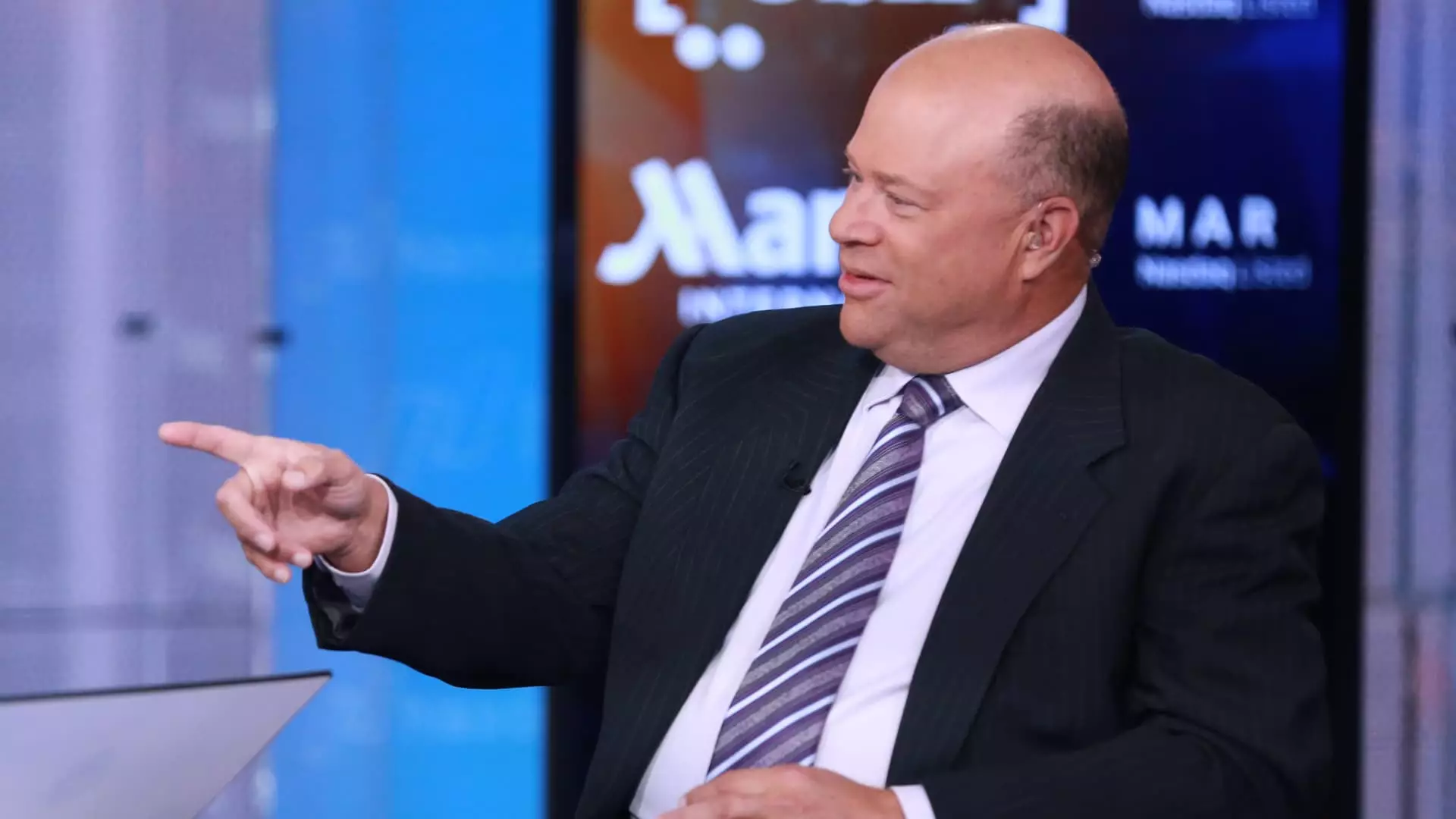In the intricate web of economic policy, the Federal Reserve’s approach to interest rates remains a pivotal factor shaping market sentiment and financial stability. Despite recent interest rate cuts aimed at invigorating growth, prominent investors like hedge fund billionaire David Tepper are warning against complacency. Tepper highlights a fundamental truth: While easing measures can provide short-term relief, they come with significant long-term risks that could destabilize markets, ignite inflation, and compromise the dollar’s strength.
Investors often view rate reductions as a sign of impending economic support, yet Tepper’s cautionary stance underscores a more nuanced reality. He emphasizes that easing policies, if pushed too far, risk fueling inflationary spirals—a troubling scenario considering the already high valuations in the equity markets. His perspective reveals a critical insight: monetary policy is a double-edged sword that must be wielded with precision, lest it inadvertently destabilize the economic foundation it seeks to bolster.
The Danger of Over-Easing in a High-Valuation Environment
Stock valuations have soared to levels not seen since early 2021, especially with the S&P 500 trading at nearly 23 times forward earnings. This phenomenon reflects a market driven by persistent liquidity and investor optimism, both of which are heavily influenced by the Fed’s interest rate policies. While Tepper remains cautiously optimistic about staying invested, he admits that these elevated valuations render the market vulnerable to shocks.
The risk is that aggressive rate cuts, especially if synchronized with persistent inflation, could reignite demand beyond supply capabilities. This mismatch portends a spike in inflation that could erode purchasing power and destabilize consumer confidence. Moreover, the current environment may be breeding asset bubbles, particularly in tech stocks like Nvidia and Microsoft, where valuations have become increasingly detached from fundamental earnings.
Tepper’s candid reflection that “nothing’s cheap anymore” resonates deeply. It reveals an investor grappling with the uncomfortable reality of high market multiples amid accommodative monetary policy. This tension suggests that markets might be riding a delicate wave—a wave that could break if the Fed miscalculates the timing or extent of future rate cuts.
The Perils of Easing Without Full Inflation Control
Perhaps the most compelling concern Tepper raises relates to the risk of easing before inflation is fully tamed. Despite the Fed’s signals of upcoming reductions, inflation remains sticky, driven partly by residual tariff effects and supply chain disruptions. Easing in this context risks unleashing demand that outpaces supply, fueling a renewed inflationary surge.
This scenario threatens to undo the Fed’s efforts to stabilize prices, forcing them into a tough position: either continue easing and risk overheating the economy or tighten and risk undermining growth recovery. Tepper’s warning that “going too much more on interest rates” could lead to dangerous territory encapsulates this dilemma, emphasizing a need for cautious moderation.
Additionally, easy money policies can weaken the dollar, increasing import prices and further fueling inflation. Such a cycle could compromise the broader economic stability, leading to a vicious circle of inflationary pressures and market volatility.
Market Implications and Investor Caution
Despite the high valuations, Tepper remains invested in equities, primarily because he believes the Fed’s easing stance will persist in the near term. However, his own trading involves a cautious approach, evidenced by his shifting Nvidia position. His sentiment reflects a pragmatic recognition: policymakers’ easing measures are supportive but inherently risky.
In this environment, investors must grapple with the uncomfortable truth that valuations are stretched, and the risk of a correction looms large. While the Fed’s current stance provides a temporary boost, it may not sustain the markets if inflation resurges or if bubbles burst. Tepper’s insight urges investors to question the sustainability of current rally levels and to remain vigilant for signs of overheating or deterioration in economic fundamentals.
Ultimately, the path forward demands a balanced approach—one that recognizes the temporary benefits of rate cuts but remains acutely aware of potential pitfalls. Market participants employed with this dual awareness will be better positioned to navigate the tumultuous waters ahead, rather than being swept away by the tide of over-optimism fueled by loose monetary policy.

